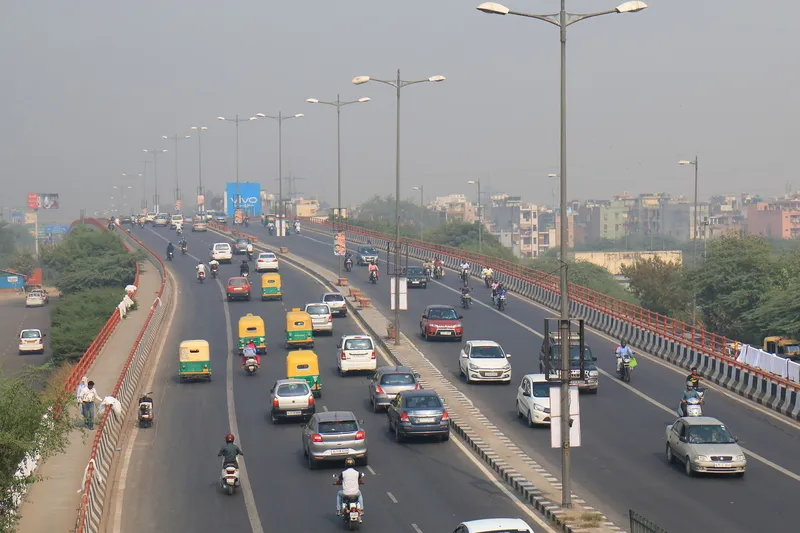A new report from Allied Market Research, Global Advanced Driver Assistance Systems Market Size, Industry Analysis, Trends, Opportunities, Growth and Forecast, 2013 – 2020 claims the global advanced driver assistance systems (ADAS) market will reach US$60.14 billion by 2020, registering a CAGR of 22.8 per cent during 2014-2020.
According to the report, the deployment of sensors in vehicles has brought a massive transformation in the automotive industry by providing improved passenger experience and safet
May 13, 2015
Read time: 3 mins
A new report from Allied Market Research, Global Advanced Driver Assistance Systems Market Size, Industry Analysis, Trends, Opportunities, Growth and Forecast, 2013 – 2020 claims the global advanced driver assistance systems (ADAS) market will reach US$60.14 billion by 2020, registering a CAGR of 22.8 per cent during 2014-2020.
According to the report, the deployment of sensors in vehicles has brought a massive transformation in the automotive industry by providing improved passenger experience and safety. The growing trend for comfort and safety while driving, along with favourable government initiatives has largely supplemented the growth of the ADAS market. An increase in electronic integration along with the multiple functions of different sensors which are used in various driving assistance applications would boost the ADAS market in the coming years.
ADAS applications are mainly adopted in the European region and contribute to the largest revenue in the global market, followed by North America. Stringent government regulations and the rising income of people, account for the high growth of Asian countries.
In Europe, the European New Car Assessment Program (NCAP), established by the EU government, imposes stringent regulations on car manufacturers in order to provide optimum on road security to the driver. The five-star safety rating system created by the NCAP program helps the customers to compare vehicles more easily and to identify safe choices for their needs.
Asia-Pacific is the most dynamically emerging market with a high CAGR of 29.54 per cent, owing to favourable macroeconomic factors such as rise in income and purchasing power, changing lifestyle due to growing urbanisation and increasing awareness about active safety systems. In the APAC region, China and Japan are the fastest growing countries in terms of automotive and technology adoption.
The ongoing trend reflects a broader adoption of ADAS applications and its manufacturing across a wide range of premium cars. The challenge for automotive manufacturers is to provide these premium features at effective costs. Following this, to minimise the effects of other challenges such as, complexity in installing different applications, environmental factors such as snow, fog, lightning and thunder, storms etc., is a big challenge for the players.
Advanced driver assistance systems are intelligent concepts that improve transport safety, efficiency and comfort without additional loads on resources such as energy and raw material. The introduction of safety systems has enforced the countries to emphasise on reducing road accidents. Governments across regions are taking active initiatives and have developed several policies to reduce fatal road accidents.
The European research project, 'interactIVe', is one such safety program that effectively facilitates accident-free traffic. The project has introduced advanced safety systems that autonomously brake and steer, along with warning the driver in case of potentially dangerous situations. Companies which provide advanced driver assistance systems are continuously developing sensor technologies and applications to meet the multiple demands of customers.
According to the report, the deployment of sensors in vehicles has brought a massive transformation in the automotive industry by providing improved passenger experience and safety. The growing trend for comfort and safety while driving, along with favourable government initiatives has largely supplemented the growth of the ADAS market. An increase in electronic integration along with the multiple functions of different sensors which are used in various driving assistance applications would boost the ADAS market in the coming years.
ADAS applications are mainly adopted in the European region and contribute to the largest revenue in the global market, followed by North America. Stringent government regulations and the rising income of people, account for the high growth of Asian countries.
In Europe, the European New Car Assessment Program (NCAP), established by the EU government, imposes stringent regulations on car manufacturers in order to provide optimum on road security to the driver. The five-star safety rating system created by the NCAP program helps the customers to compare vehicles more easily and to identify safe choices for their needs.
Asia-Pacific is the most dynamically emerging market with a high CAGR of 29.54 per cent, owing to favourable macroeconomic factors such as rise in income and purchasing power, changing lifestyle due to growing urbanisation and increasing awareness about active safety systems. In the APAC region, China and Japan are the fastest growing countries in terms of automotive and technology adoption.
The ongoing trend reflects a broader adoption of ADAS applications and its manufacturing across a wide range of premium cars. The challenge for automotive manufacturers is to provide these premium features at effective costs. Following this, to minimise the effects of other challenges such as, complexity in installing different applications, environmental factors such as snow, fog, lightning and thunder, storms etc., is a big challenge for the players.
Advanced driver assistance systems are intelligent concepts that improve transport safety, efficiency and comfort without additional loads on resources such as energy and raw material. The introduction of safety systems has enforced the countries to emphasise on reducing road accidents. Governments across regions are taking active initiatives and have developed several policies to reduce fatal road accidents.
The European research project, 'interactIVe', is one such safety program that effectively facilitates accident-free traffic. The project has introduced advanced safety systems that autonomously brake and steer, along with warning the driver in case of potentially dangerous situations. Companies which provide advanced driver assistance systems are continuously developing sensor technologies and applications to meet the multiple demands of customers.








